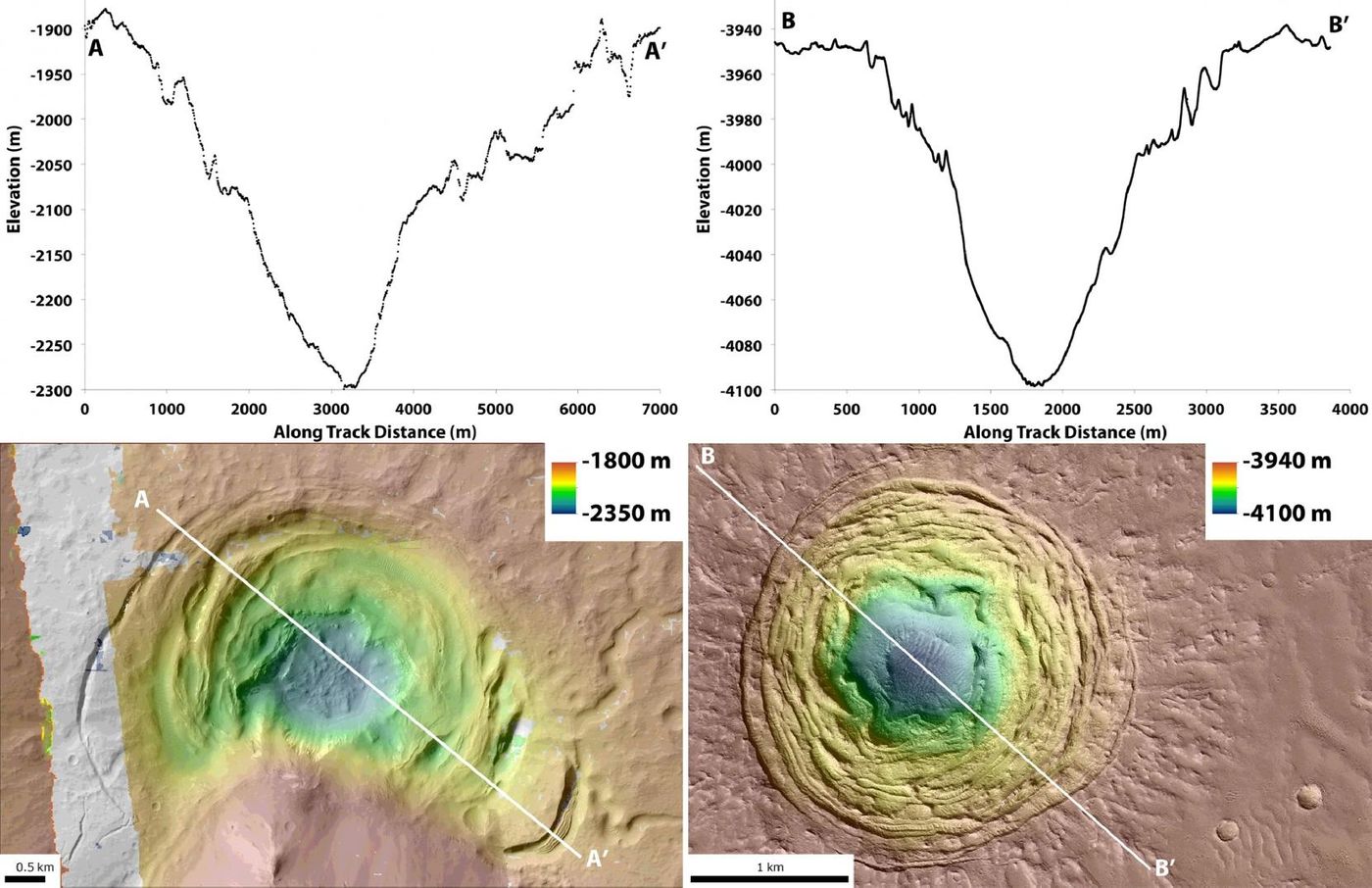Depressions on Mars' Surface May be Great Sites for Life Search
A couple of specific spots on the red planet in our Solar System, Mars, might just foster zones of interest after scientists deemed them potentially capable of supporting small microbial life forms.
A number of depressions in the planet’s surface were reportedly caused by a volcano at some point in the planet’s past, but because they’re situated on a volcano, there would undoubtedly be remnants of life-centric chemicals and minerals in the area.
So, what does that mean? According to researchers from the University of Texas at Austin, this might just be the very next place we should begin our search for life on Mars.

Image Credit: Joseph Levy/NASA
“We were drawn to this site because it looked like it could host some of the key ingredients for habitability — water, heat and nutrients,” said lead author Joseph Levy, a research associate at the University of Texas Institute for Geophysics.
The researchers reportedly discovered the depressions back in 2009 via photos taken with the Mars Reconnaissance Orbiter, but it wasn’t until recently that the team actually had the ability to study them more thoroughly.
The team used stereoscopic imaging technology to come up with more details about how these dishes in the surface were created and their findings were published in the journal Icarus. These images gave the researchers better 3D images and could help them determine how they were formed, and more importantly, whether or not volcanoes were involved.
“The big contribution of the study was that we were able to measure not just their shape and appearance, but also how much material was lost to form the depressions. That 3-D view lets us test this idea of volcanic or impact,” Levy said.
The conclusion was that one of the depressions had evidence of being created by a volcano, while the other had evidence of being created by an impact. The one that was created by volcanic activity is getting a lot more attention, however.
Lacking the surrounding debris that are consistent with an impact zone, and having a funnel-like shape where material would have slowly sloped downwards as it melted due to the volcano, this depression could have all the activity necessary to support simple life forms.
Fostering important things like liquid water and chemical nutrients, this is the kind of breeding ground, even if sub-surface, where we might expect to find otherworldly life.
The researchers also note we shouldn't rule out the impact zone either, as it's in close proximity to the volcanic one and likely shares a lot of the same chemical compositions.
It should be interesting to see what future findings about these depressions reveal. With the Mars 2020 rover soon heading to the red planet, we’ll have even more surface-dwelling robots on Mars that could help us in the search for extraterrestrial life. Perhaps one will get a mission to explore these parts.
Source: University of Texas at Austin








